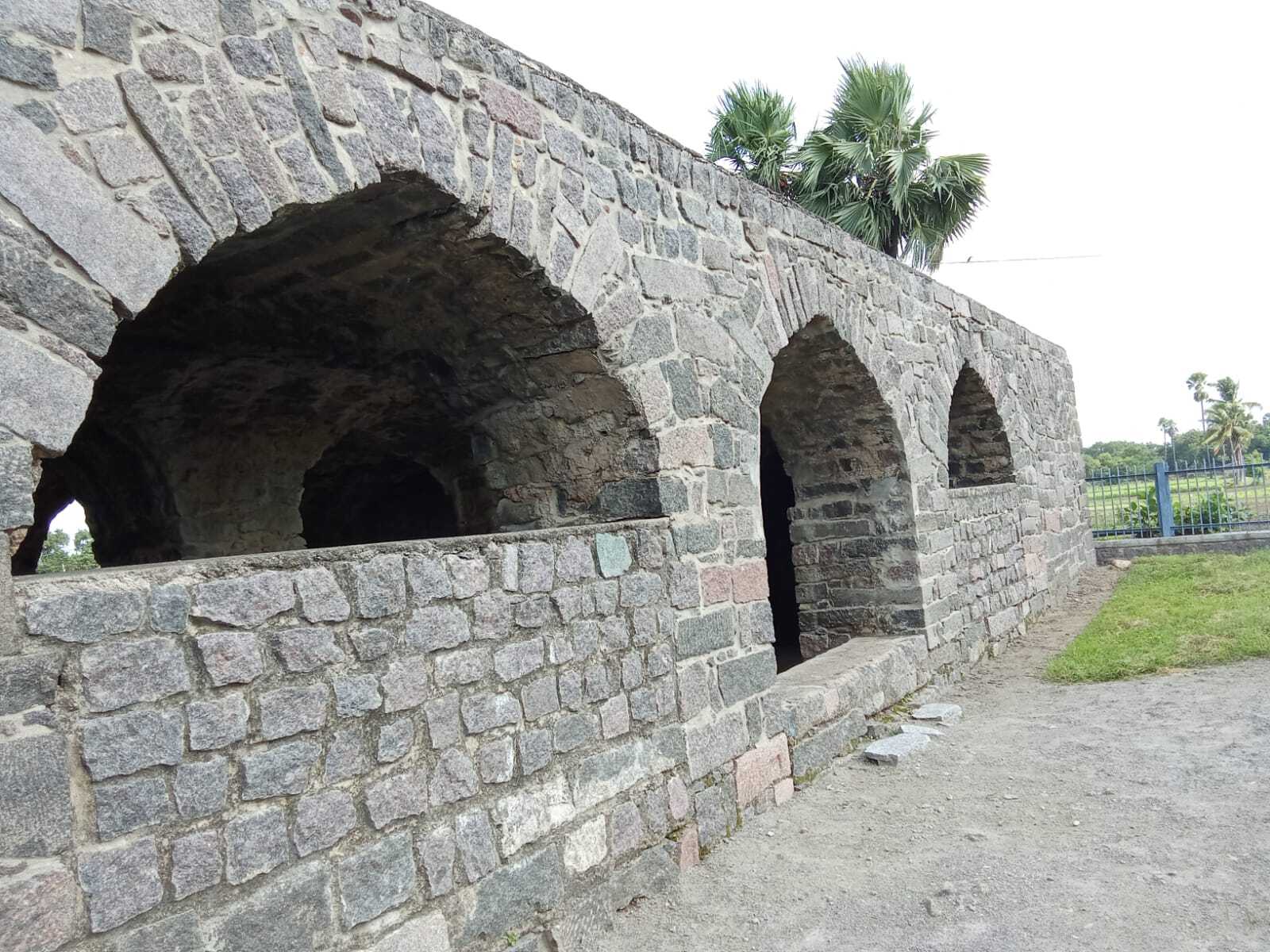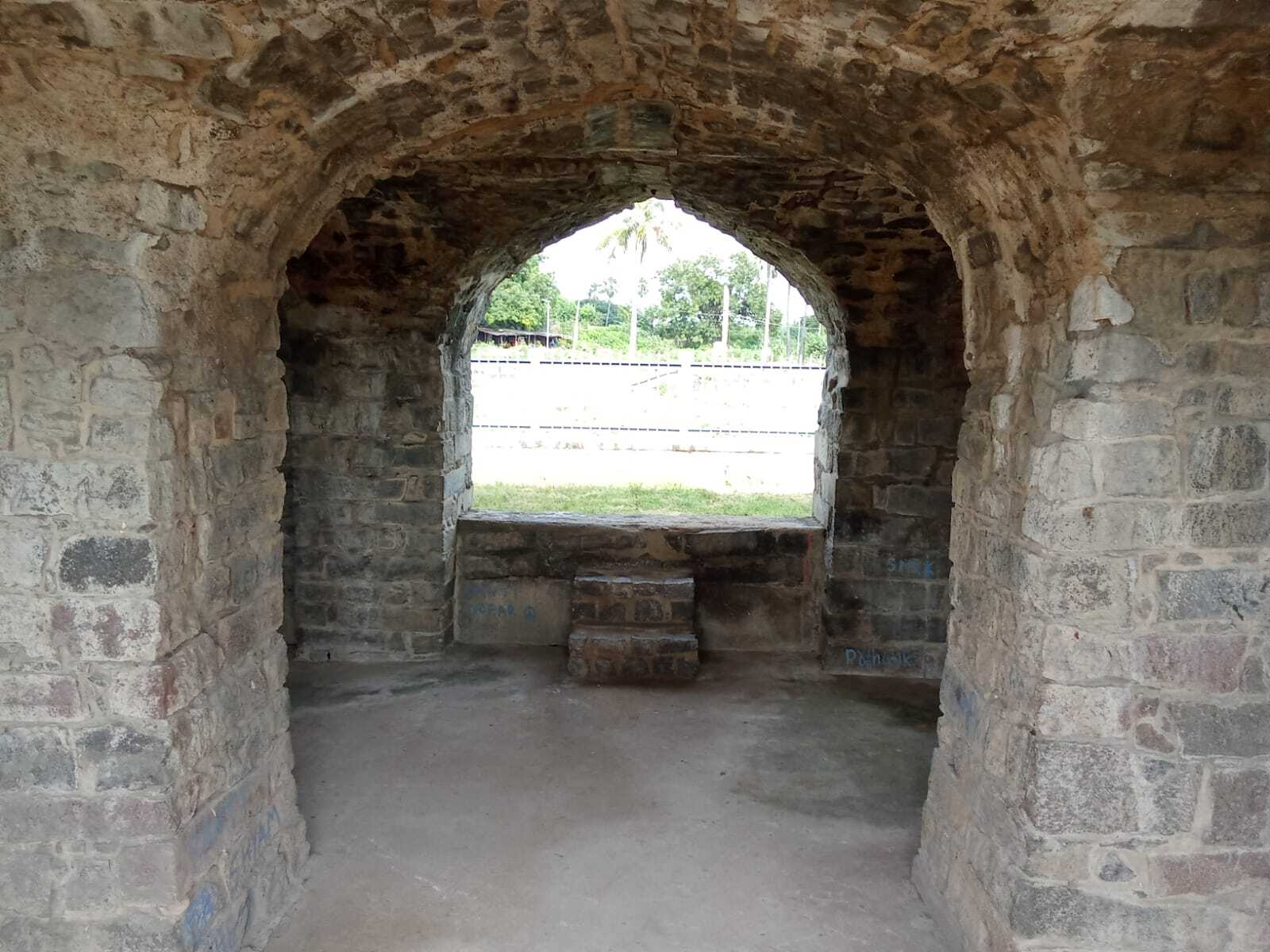Amunition House

Amunition House
The Ammunition House is an intriguing structure within Warangal Fort that reflects the architectural and historical transitions in the region following the fall of the Kakatiya dynasty.
Architectural Layout:
1. Indo-Islamic Style:
The structure exhibits Indo-Islamic architectural features, which became prominent after the Tughlaq dynasty took over Warangal. This style is characterized by the use of arches, domes, and intricate decorative elements that blend Indian and Islamic architectural traditions.

2. Dimensions and Structure:
The exact dimensions of the building are not specified, but its size and construction suggest it was intended for practical purposes rather than religious or residential use. The robust construction indicates it was designed to store or protect valuable or dangerous materials.

Historical Context:
1. Post-Kakatiya Period:
After the fall of the Kakatiya dynasty, Warangal came under the control of the Tughlaq dynasty. This period saw significant architectural and cultural changes as the new rulers imposed their own styles and administrative structures.
2. Tughlaq Influence:
The Tughlaqs were known for their military architecture and the establishment of fortified structures. The Ammunition House likely dates from this period and reflects the Tughlaqs' focus on military preparedness and control.
Potential Functions:
1. Armoury:
One plausible function of the Ammunition House is that it served as an armoury. The structure may have been used to store artillery, such as cannons, cannonballs, and gunpowder. The fortified design would be suitable for protecting such volatile and valuable materials.
2. Military Outpost or Security Check Post:
Another possibility is that the structure functioned as a military outpost or security check post. Its strategic location within the fort complex and robust construction could support this use, although the exact dimensions might not fully align with typical examples of these structures.
3. Ambiguity in Function:
Despite these possibilities, the dimensions and specific features of the structure leave room for debate. The lack of definitive evidence makes it challenging to conclusively determine its primary function.
Archaeological and Historical Importance:
1. Architectural Transition:
The Ammunition House represents a period of architectural transition in Warangal, showcasing the blend of indigenous and Islamic architectural elements. This makes it an important site for studying the evolution of architectural styles in the region.
2. Military History:
As a potential military structure, the Ammunition House provides insights into the military strategies and technologies of the period. Studying such structures helps archaeologists understand the defensive and offensive capabilities of the ruling powers.
3. Cultural Interactions:
The Indo-Islamic style of the structure highlights the cultural interactions and influences that occurred during the Tughlaq rule. This blending of styles reflects the broader historical processes of cultural assimilation and adaptation.
Did you like this ?